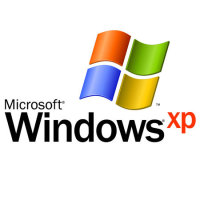I have recently begun backing up my data such as photos (both digital and film), videos, and other files so that in case something happens, I will not lose my irreplaceable data. There is always much discussion on the best ways to archive data, and I have my way. Many may agree and disagree with my method, but this one works for me.
In this post I will explain my method, as well as the reasons I chose to use the tools and storage devices.
Organizing and Labelling the Data
Before I begin to archive the data, I first organize the data, as well as set some labeling standards. The archival process is much easier once you have organized all your files, photos, and whatever else you will be archiving.
If you plan to scan photos, slides, negatives, or other documents, you should separate them into groups, either by date or people. This will help you to keep certain items together within your archives.
Once you have organized your data, you should create a labeling scheme to make it easier for you to find the data that you need. I have decided to backup my data on DVDs (I’ll explain why below), so each DVD is stored in a jewel case with a label assigned to the case. The label contains the following:
- Title – I provide a descriptive title to indicate the contents of the DVD.
- Years – I indicate the years covered by the data on the DVD. This helps to order the DVDs in chronological order, even if they weren’t burned in that order.
- Created Date – The date that I created the DVD. This will come in handy in the future to determine how old the DVD is, and whether I should create a new copy of the DVD.
- Catalog Name – This is a unique name that I give each DVD so I can organize them. I came up with a naming convention that indicates the type of data on the DVD.
- Family – This field contains the last name of the family represented by the data on the DVD. This helps to find data for a specific family name.
I also decided to use coloured jewel cases that will help indicated the data on each DVD. For example, for photos I use a black jewel case, and videos will be stored in blue cases. You can easily purchase a box of coloured jewel cases for cheap.
Once I have organized my data, and came up with a labeling scheme, the next step is to start determining how to store the data.
Archiving Media
This is probably the most debated point with regards to archiving data. Many people have their opinions about which media is best. Each media type has its pros and cons, so choose one that works for you.
I have chosen to archive my data on single-layer DVD discs. I chose this method because they are relatively affordable, can hold a lot of data and can be easily stored. When I do make an archive disc, I always make two copies, so that if one becomes corrupted in the future, then I can retrieve my data from the copy.
I have, however, not chosen just any DVD discs to use for archiving. I have chosen to use DVD+R discs from Taiyo Yuden. The DVD+R format has several benefits over the DVD-R specification, with one of the benefits being better error management. Taiyo Yuden discs are known as very reliable discs, so I chose them for my archives.
Just in case you are wondering where you can purchase Taiyo Yuden discs, I discovered that very few stores, if any, carry them. I ordered mine online, as most people probably do. I only know of two online stores where you can order them for those living in Canada or the United States:
If you know where else you can purchase these DVDs, I would like to know. Be careful, however, as many places offer DVDs that say they are Taiyo Yuden, when in fact they are fakes.
I burn the DVD using Nero, using the catalog name as the DVD name, and perform a verification after each burn to ensure that the data was written without any issues. Once the burn has completed, I print the label, and then insert the label into the jewel case with the DVD. I write the catalog name on the DVD using a water-based CD marker.
When I’m done with my burning, I move one of the copies offsite to prevent all my archives from being destroy if something were to happen to my home.
Many people have discussed the life of a burned DVD, and whether their data will be available in 50 years. I think that as long as the data is readable after 5 years I should be good. I’ll probably move my data to the next generation of storage media, so won’t care if these DVDs can be read in 50 years.
Summary
In this post I have provided an overview of my method for archiving my data. I use a simple labeling system as well as DVD+R discs to organize and store my data. For more security, and piece of mind, I also always burn at least two copies of the data, just in case one is destroyed. Finally I move one of the copies offsite to losing all archives if something were to happen.
You can choose to follow my method, or come up with your own. You should always create a system that works best for you.


